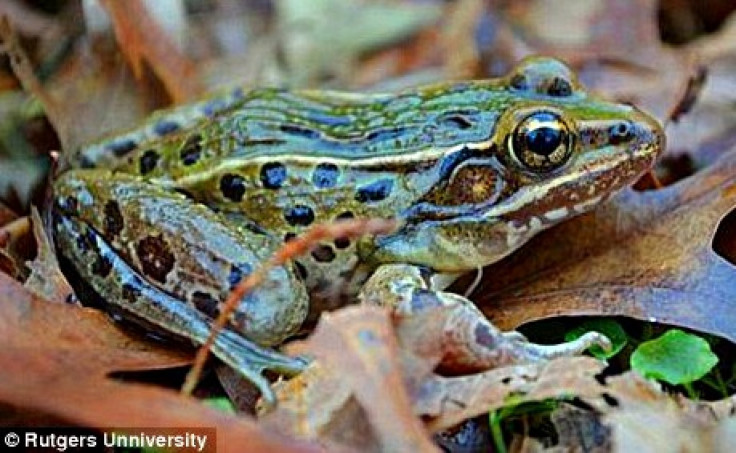New Frog Species Discovered in NYC Concrete Jungle

Scientists discovered a new species of leopard frog in New York City’s concrete jungle and several surrounding counties. While most undiscovered species are found in remote areas, the surprising fact about this discovery is that it’s been in plain sight all along.
Three years ago, in 2009, Jeremy A. Feinberg, a doctoral candidate in Ecology and Evolution at Rutgers University, went into the wilds of Staten Island to analyze the habitat. Instead of hearing the distinctive mating call of the southern leopard frog, which usually consists of a repetitive chuckle, he heard an entirely different call – a single chuck. “I started hearing these calls, and I realized they were distinct,” said Feinberg.
Now, in 2012, Feinberg and four other scientists made the discovery official: it is a new species of leopard frog, living in one of the largest and most populated cities in the world. For a long time, the new species was confused with the southern leopard frog, to which it bears close resemblance. The species is medium size, with dark spots on an olive or green background. It lives around grassy meadows and breeds in pools or ponds. Though nearly identical in appearance, the new species of leopard frog is genetically distinct. There are more than a dozen species of leopard frog, ranging from Canada to Central America. The known range of the new species is more or less limited to the surroundings of Midtown Manhattan, ranging from southern Trenton, N.J., to northern Putnam County, N.Y.
“Here is a brand-new species, and it’s not a species of bacteria or a barely visible insect,” said Bradley Shaffer, a UCLA professor in the department of Ecology and Evolutionary Biology. “Even in an urban center like New York, where herpetologists have tromped all over for a century or more, there can be new species out there. This shows the importance of urban areas in terms of conservation and biodiversity,” added Shaffer.
The new findings are currently available online, but will be published in an upcoming issue of the journal Molecular Phylogenetics and Evolution. Feinberg has positively identified the new species on Staten Island so far, but according to him, it probably inhabited Manhattan and the other boroughs at some point. He found specimens in the Great Swamp Natural Wildlife Refuge and the Meadowlands in New Jersey, as well as in New York’s Putnam and Orange Counties. Other frogs were collected in central Connecticut. The dead center of population is near Yankee Stadium. However the species has not been found yet in the Bronx. “I think that at this point it’s very important to do additional surveys,” reported Shaffer. The frog’s range “may be no wider than we have found or it may be wider.”
(reported by Alexandra Burlacu, edited by Surojit Chatterjee)
© Copyright IBTimes 2024. All rights reserved.











